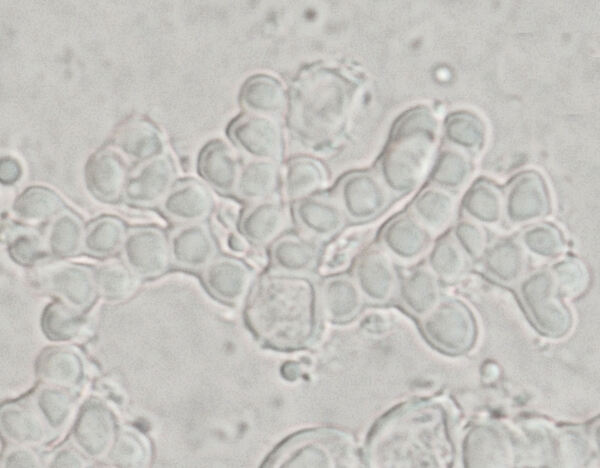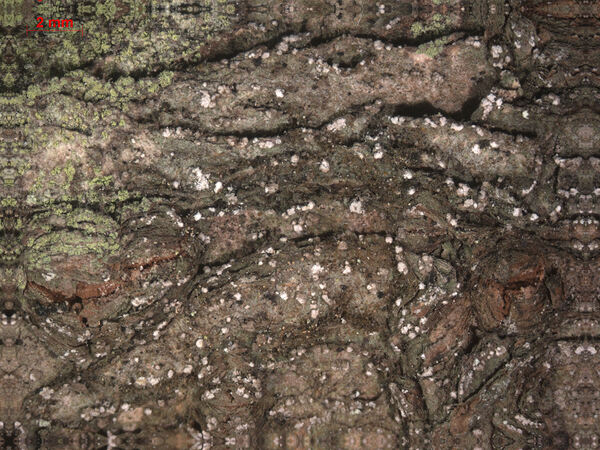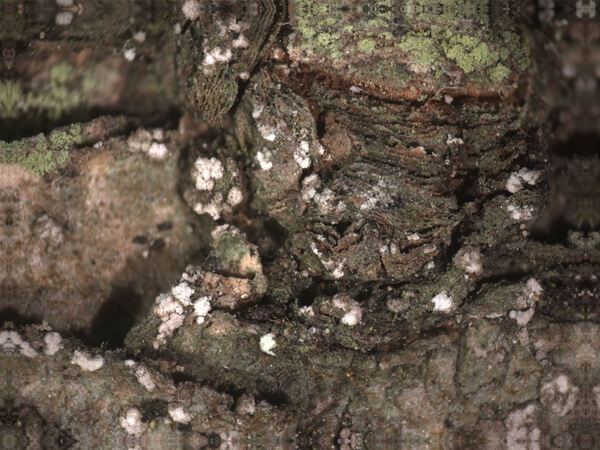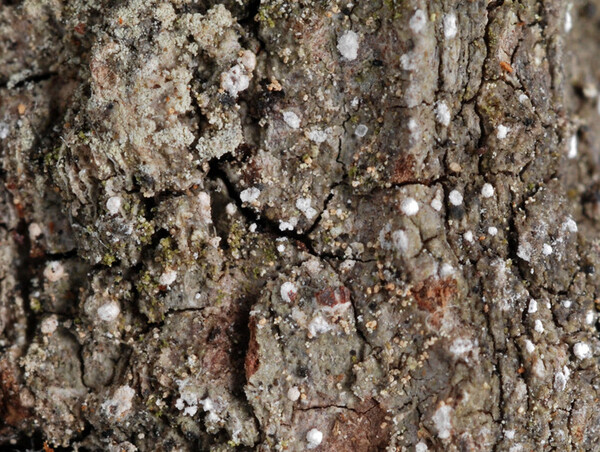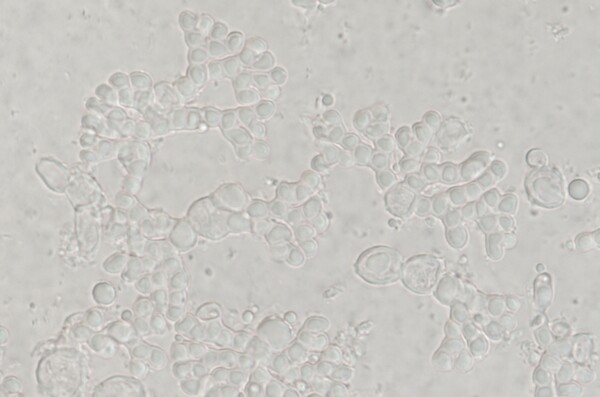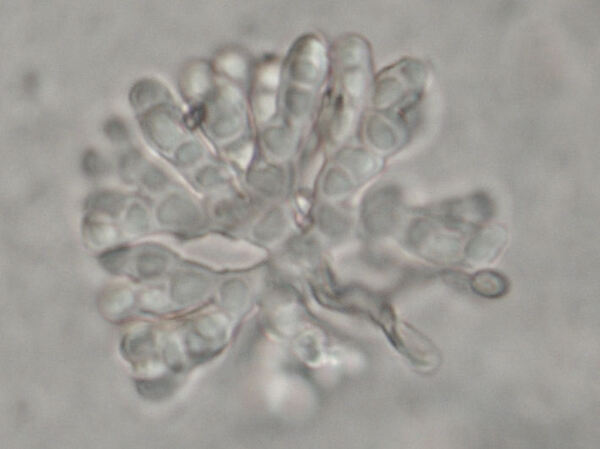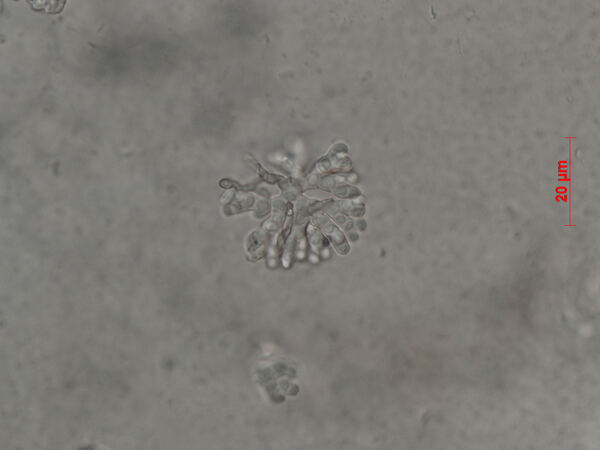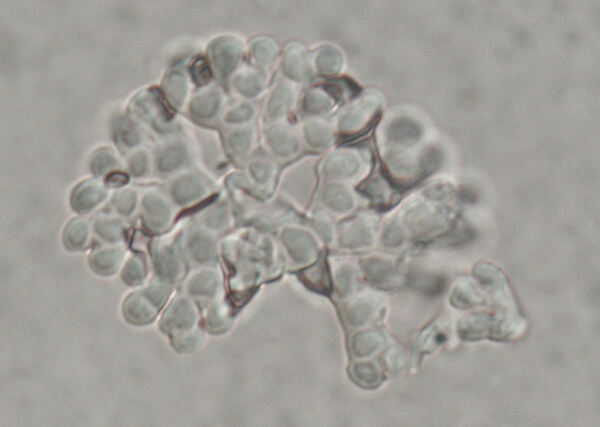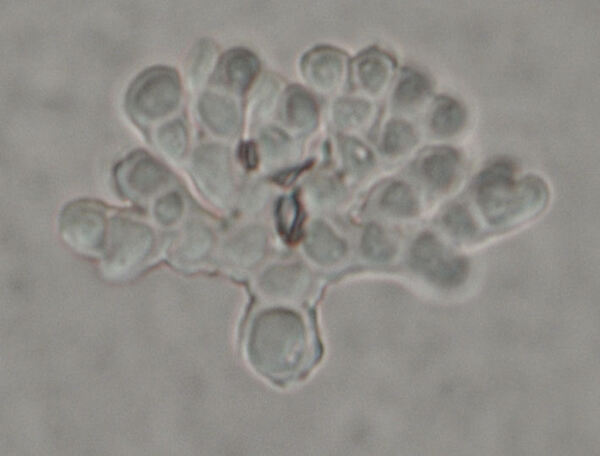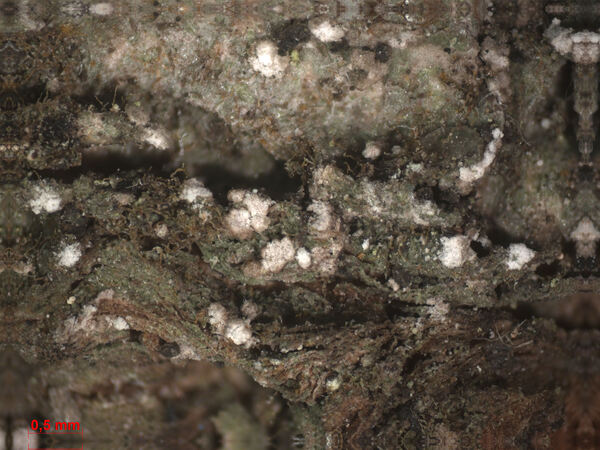Cheiromycina flabelliformis B. Sutton
in Sutton & Muhr, Nord. J. Bot., 6: 834, 1986.
Synonyms:
Distribution: N - TAA (Thor & Nascimbene 2007, Nascimbene & al. 2022).
Description: Thallus crustose, thinly episubstratic or partly endosubstratic, grey-brown, uneven, corticate, 60-130 µm thick, the cortex irregular in thickness, 15-25 µm thick, of subglobose, mainly 2-2.5 µm wide cells, the hyphae in the photobiont layer thin-walled, branched, septate, hyaline, (1.5-)2-3(-4) µm thick, penetrating the outer layers of periderm cells. Conidiomata sporodochial, superficial, grey to olivaceous grey but often eroded and appearing white, pulverulent, up to 0.4 mm across and up to 0.1 mm high, initially punctiform, then circular to ellipsoid, strongly convex, solitary or sometimes in clusters of 2-5, consisting of a base of loosely aggregated, hyaline hyphae from which ascending branches bear conidia at different levels. Conidiophores hyaline, septate, irregularly branched, 2-2.5 µm wide towards the base, progressively wider (up to 10 µm) towards the apex, the individual cells markedly constricted at septa, the cell walls 1-2 µm thick, formed from the basal cells of the conidiomata. Conidia up to 35 x 22-35 µm, hyaline when young, turning pale brown at base at maturity, smooth, flabelliform to palmate, consisting of a globose-truncate basal cell measuring (6.5-)8.4(-9.5) µm, from which usually 2 diverging dichotomous branches arise, each of which branches again, either dichotomously or irregularly, finally producing a conidium with 4-10 arms, the arms 4-9-distoseptate, with reduced cell lumina, straight or slightly curved, obtuse, measuring (10-)13-18(-20) x 3.5-5 µm. Photobiont chlorococcoid, the cells 6-10 µm wide. Spot tests: thallus K-, C-, KC-, P-, UV-. Chemistry: without lichen substances. Note: on acid bark, more rarely on wood in humid, sheltered situations, mostly in upland areas. The Italian sample was collected on a stump of Picea. It is included in the Italian red list of epiphytic lichens as “Data Deficient” (Nascimbene & al. 2013c).
Growth form: Crustose
Substrata: bark
Photobiont: green algae other than Trentepohlia
Reproductive strategy: mainly asexual, by conidia and thalloconidia
Commonnes-rarity: (info)
Alpine belt: absent
Subalpine belt: extremely rare
Oromediterranean belt: absent
Montane belt: extremely rare
Submediterranean belt: absent
Padanian area: absent
Humid submediterranean belt: absent
Humid mediterranean belt: absent
Dry mediterranean belt: absent
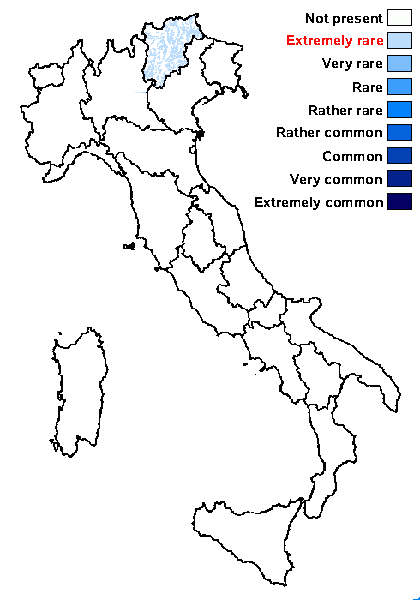
Predictive model
Growth form: Crustose
Substrata: bark
Photobiont: green algae other than Trentepohlia
Reproductive strategy: mainly asexual, by conidia and thalloconidia
Commonnes-rarity: (info)
Alpine belt: absent
Subalpine belt: extremely rare
Oromediterranean belt: absent
Montane belt: extremely rare
Submediterranean belt: absent
Padanian area: absent
Humid submediterranean belt: absent
Humid mediterranean belt: absent
Dry mediterranean belt: absent

Predictive model
 INDEX FUNGORUM
INDEX FUNGORUM
 GBIF
GBIF
 DOLICHENS
DOLICHENS
